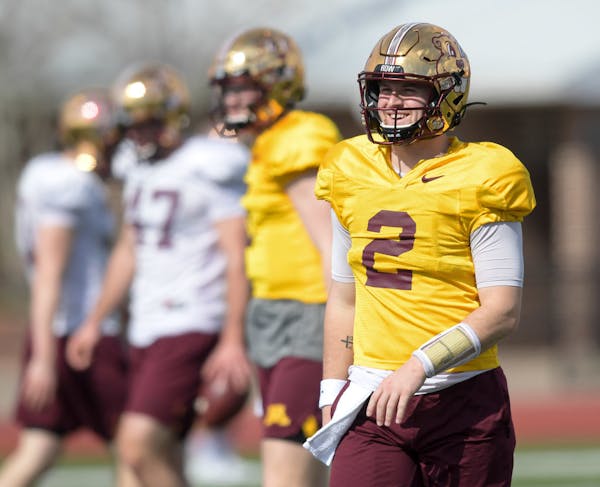After months of uncertainty, the season being off and on, a racial justice awakening and a global pandemic still rampant, Big Ten football has emerged.
A little late, but when a truncated conference-only season begins Saturday, it'll at least be some semblance of normalcy returned. Albeit at a breakneck speed.
"Ready or not, here we come, and here comes the season," Gophers coach P.J. Fleck said. "I think everybody's within that time frame, and everybody has that pressure on them to get their team ready."
This year in the Big Ten will be unique. A nine-games-in-nine-weeks sprint to catch up to the other Power Five schools, who started earlier. And while teams from the Big 12, ACC and SEC have seen positive tests delay games or shutdown practices, the Big Ten has no flexibility for makeups if it wants teams to be College Football Playoff eligible.
That is still the goal, though something even more important might temporarily supersede a championship trophy. The Big Ten once canceled its fall sports out of concern for athletes' safety. Daily testing should help limit outbreaks, but just making it through the season without any major illnesses or public health debacles would be a win.
Big Ten teams haven't had much time for on-field preparation with spring ball cut short and training camp missed. Yet depth will be key should any players have to sit out the 21 days for a positive test. No big crowds in the stands will be a weird atmosphere, especially for teams breaking in new quarterbacks or coaches.
But while Big Ten football this year will undoubtedly be unique, coaches, players and fans will readily take the change over nothing.
"Football in 2020 is going to be really different," Fleck said. " … [But] it's not any less real than it's ever been. It's real. And it counts."
Champion déjà vu
For all that will be atypical this season, some things never change. The constant of the Big Ten championship game being white and red all over seems to be one of those.
Ohio State and Wisconsin have vied for the title three times since 2014, plus each team has made one other trip to the final but not against the other. Odds are on a repeat in 2020.
The Buckeyes are ranked No. 5 in the nation without having played a game yet. They have Heisman Trophy contender Justin Fields at quarterback, the highlight on a team absolutely riddled with talent. Seeing Ohio State make another CFP appearance is almost a foregone conclusion.
Wisconsin is that consistent presence in the West, rather comforting in today's chaotic world. While the No. 16 Badgers have holes to fill, with running back Jonathan Taylor now in the NFL and quarterback Jack Coan injured, their players never seem to have a problem stepping in and excelling.
Postseason predicament
Ahead of last season, the big topic among coaches at Big Ten Media Days was whether the CFP would snub the Big Ten yet again. Ohio State obviously remedied that, but this year the question has become whether there will even be a postseason for the Big Ten.
The NCAA isn't mandating a certain number of games and certain record for bowl eligibility this year, given how weird schedules are. But the CFP will make its final rankings, and thus the semifinal field, the day after the Big Ten finishes its crunched season. If COVID-19 forces game cancellations with no time to make up, it's unclear how that will affect Big Ten teams' chances at the national title.
Players' voices
One of the most intriguing story lines this season doesn't really have anything to do with football. The combination of playing amid a pandemic and rising outcry about racial injustice has led many college players to find their voices and use their platforms to speak out about causes that matter to them.
When the Big Ten was first formulating a return-to-play plan, Big Ten athletes banded together to pen an open letter that demanded better safety precautions. Individual players have used their social media accounts to denounce racism, with Gophers receiver Rashod Bateman going as far as to change his jersey to No. 0, symbolizing zero tolerance for racism.
With Big Ten football back on, even without large crowds, players will still have millions of viewers on TV. What protests or demonstrations teams or players might do will draw a lot of attention and display college athletes' power in a new and unignorable way.
Bills and Chargers get their receivers in Day 2 of the NFL draft in Keon Coleman and Ladd McConkey
Rory McIlroy and Shane Lowry remain tied for lead lead in the Zurich Classic of New Orleans

Turner 'a game-wrecker' for Vikings pass rush

